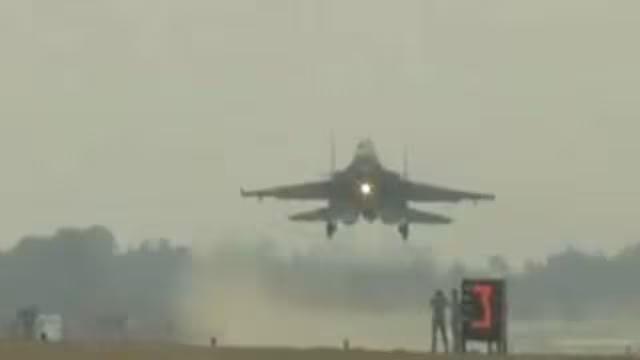
Why is IAF conducting fighter jets’ landing & take-off drill at Ganga Expressway in UP?
In a unique exercise, the Indian Air Force (IAF) recently conducted take-off and landing drills of fighter jets on the Ganga Expressway in Uttar Pradesh. The exercise, which included fighter jets like Rafale, aimed to assess the expressway’s potential as an alternative runway during times of war or national emergencies. This historic event marked the first airstrip on any expressway in India equipped to handle both day and night landings of jets.
The IAF’s decision to conduct this exercise on the Ganga Expressway, a 302-kilometer long expressway that connects Greater Noida to Ballia, was significant. The expressway, which is designed to reduce travel time between cities and boost economic growth, has been identified as a potential emergency landing strip for fighter jets in case of a national crisis or war.
The exercise, which was conducted at day and night, involved the participation of Rafale fighter jets, which are known for their advanced navigation and landing capabilities. The pilots, who were trained to operate in challenging conditions, successfully landed and took off from the expressway using the aircraft’s advanced avionics and navigation systems.
The IAF’s decision to conduct this exercise on the Ganga Expressway was seen as a significant move to enhance the country’s air defense capabilities. The expressway, which is strategically located, offers a convenient and secure alternative for fighter jets to take off and land during times of crisis.
According to sources, the IAF had conducted a thorough survey of the expressway before deciding to conduct the exercise. The survey, which was carried out by the IAF’s engineering wing, identified the expressway as a suitable location for an emergency landing strip. The expressway’s flat and wide surface, which is designed to accommodate high-speed traffic, made it an ideal location for fighter jets to take off and land safely.
The IAF’s decision to use the Ganga Expressway as an emergency landing strip is not without precedent. In 2019, the IAF had conducted a similar exercise on the Mumbai-Pune Expressway, which is also designed to serve as an emergency landing strip. The exercise, which involved the participation of Su-30MKI fighter jets, was seen as a significant move to enhance the country’s air defense capabilities.
The use of expressways as emergency landing strips is not unique to India. Many countries, including the United States and China, have similar arrangements in place. In the United States, for example, several expressways are designed to serve as emergency landing strips for military aircraft. Similarly, in China, the government has identified several expressways as potential emergency landing strips for fighter jets.
The IAF’s decision to conduct the exercise on the Ganga Expressway was seen as a significant move to enhance the country’s air defense capabilities. The exercise, which was conducted in a highly secure environment, demonstrated the IAF’s ability to operate in challenging conditions and respond quickly to national emergencies.
The Ganga Expressway, which is designed to reduce travel time between cities and boost economic growth, has been identified as a key infrastructure project by the Uttar Pradesh government. The expressway, which is expected to reduce travel time between Greater Noida and Ballia by several hours, is designed to serve as a major transportation artery for the region.
In conclusion, the IAF’s decision to conduct fighter jets’ landing and take-off drills on the Ganga Expressway in UP is significant. The exercise, which involved the participation of Rafale fighter jets, aimed to assess the expressway’s potential as an alternative runway during times of war or national emergencies. The IAF’s decision to use the expressway as an emergency landing strip is a major boost to the country’s air defense capabilities and demonstrates the IAF’s ability to respond quickly to national emergencies.






